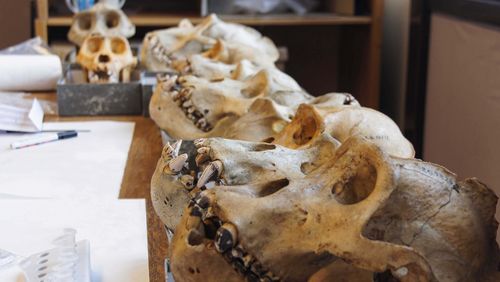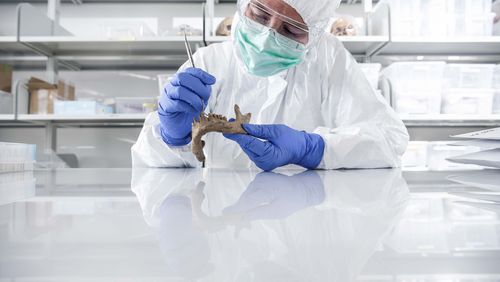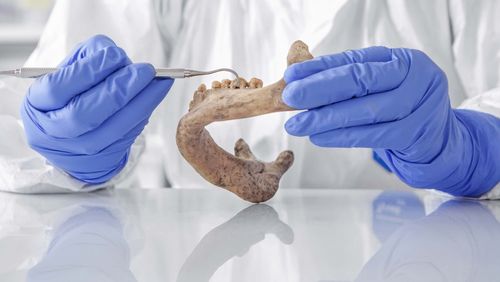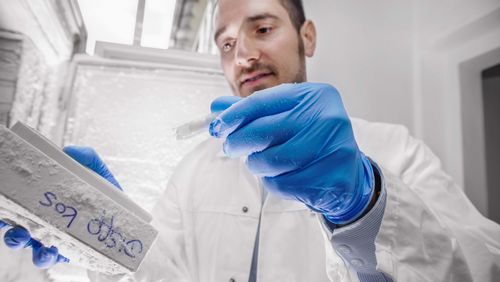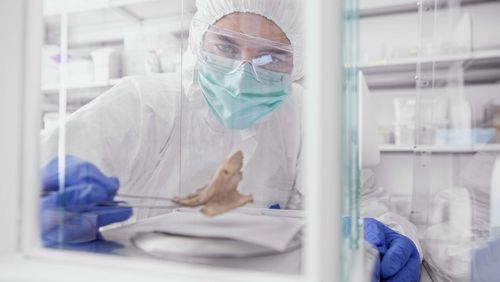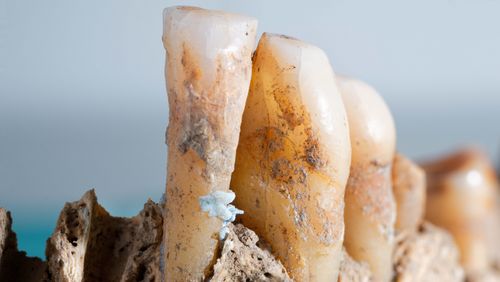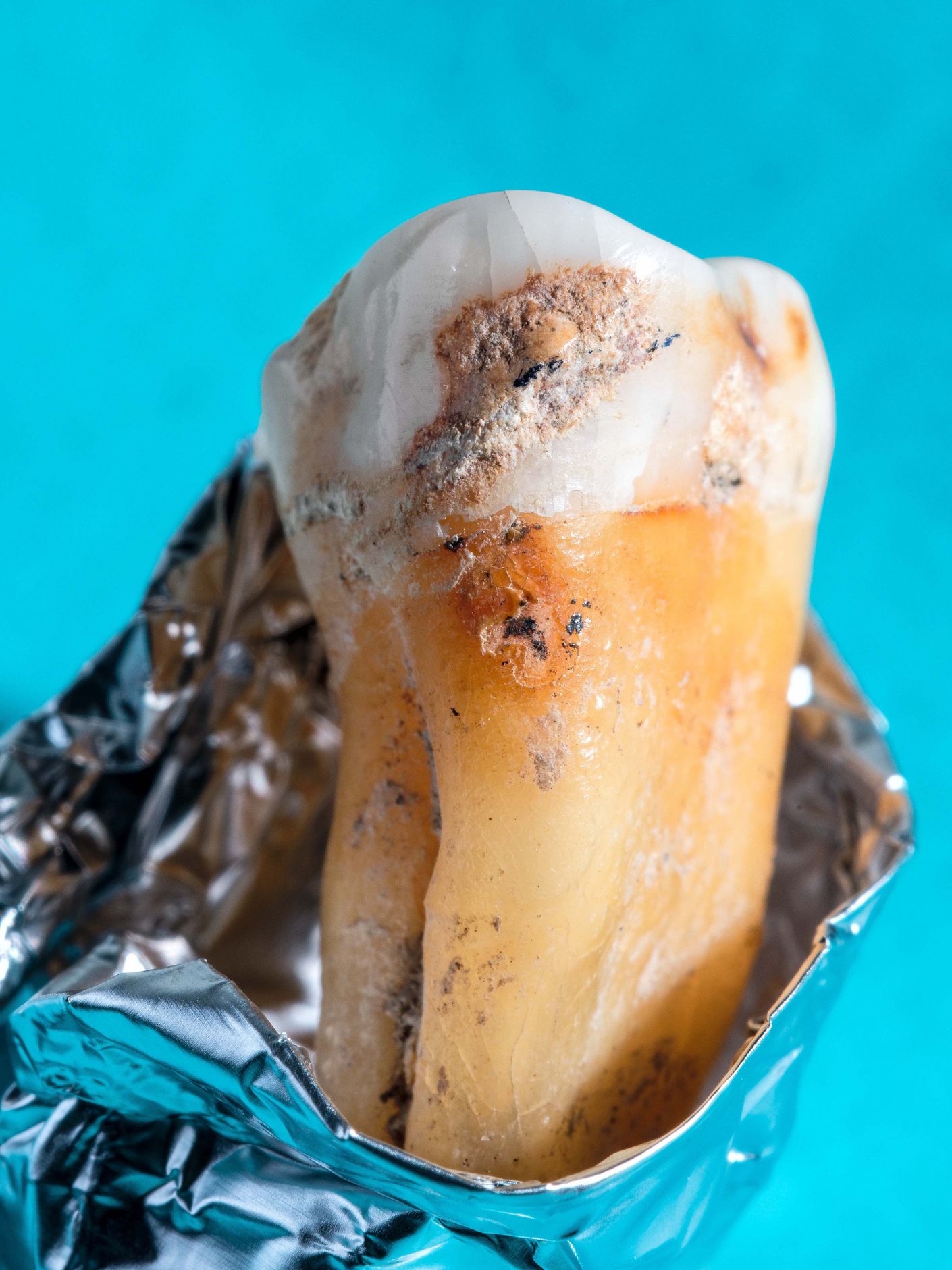
Moving forward into the past
Bacteria are increasingly becoming resistant to antibiotics—a worrisome development and a fundamental threat to global health. To solve the problem, chemist and biotechnologist Pierre Stallforth and archaeologist Christina Warinner have adopted a highly innovative approach: they are delving deep into human history in the search of substances able to combat the resistant bacteria of today. That Neanderthals never brushed their teeth has proven to be a blessing.
Alexander Fleming’s chance discovery of penicillin in 1928 is one of the major milestones in the history of medicine. In his rather untidy lab, the Scottish bacteriologist noticed that a mould of the genus penicillium was preventing bacteria cultures from multiplying. In the coming decades, the various strains of antibiotics developed on the basis of Fleming’s work would save millions of lives. But this achievement is now in jeopardy. Over the years, medical staff and patients alike have grown careless in their use of the wonder drug, and the ever-adaptive bacteria have taken advantage of the situation by developing defence mechanisms against antibiotics. Bacterial resistance to life-saving medicines has consequently made treating infections like pneumonia and tuberculosis more difficult—or impossible in some cases. Current estimates place the number of worldwide deaths due to antibiotic resistance at 700 000 per year.
Seeking diversity
Another problematic aspect is that very few new strains of antibiotics have been developed in recent decades. Now, however, research efforts have gained momentum thanks to creative minds, unconventional ideas and innovative technologies. The Werner Siemens Foundation is funding the work of two such pioneering thinkers in Jena, Germany: chemist and biotechnologist Pierre Stallforth of the Leibniz Institute for Natural Product Research andInfection Biology, and archaeologist Christina Warinner of the Max Planck Institute for the Science of Human History. In the scope of “Project Palaeobiotechnology”—their joint research endeavour—the two scientists are seeking new antibiotic agents at an unlikely site: early human history. The reason for their unusual approach is that bacteria have always defended themselves against enemies and rivals (for instance other bacteria) by producing antibiotic substances. Medical researchers have taken inspiration from this adaptability and, already today, three-quarters of all antibiotics are modelled on so-called natural products created by bacteria. Since the 1970s, however, only synthetic antibiotics having a similar, but not identical chemical structure have been produced—and this makes it easier for bacteria to develop microbial resistance.
The new recipe
Stallforth and Warinner are convinced that new antibiotic drug classes are necessary. The idea behind their decision to search in the ancient past is that they want to surprise resistant bacteria with substances that no longer occur in nature. And thanks to innovations in biotechnological methods, recreating these natural products is now possible. The recipe entails sifting through the DNA of prehistoric humans to find the genetic material responsible for producing these agents, then introducing the DNA sequences into present-day bacteria. The result: under laboratory conditions, the bacteria produce natural products identical to those in early history. In short, Warinner and Stallforth aim to transport useful substances from the past to the present in order to develop medicines for the future. The steps along the way are depicted in the photo essay.
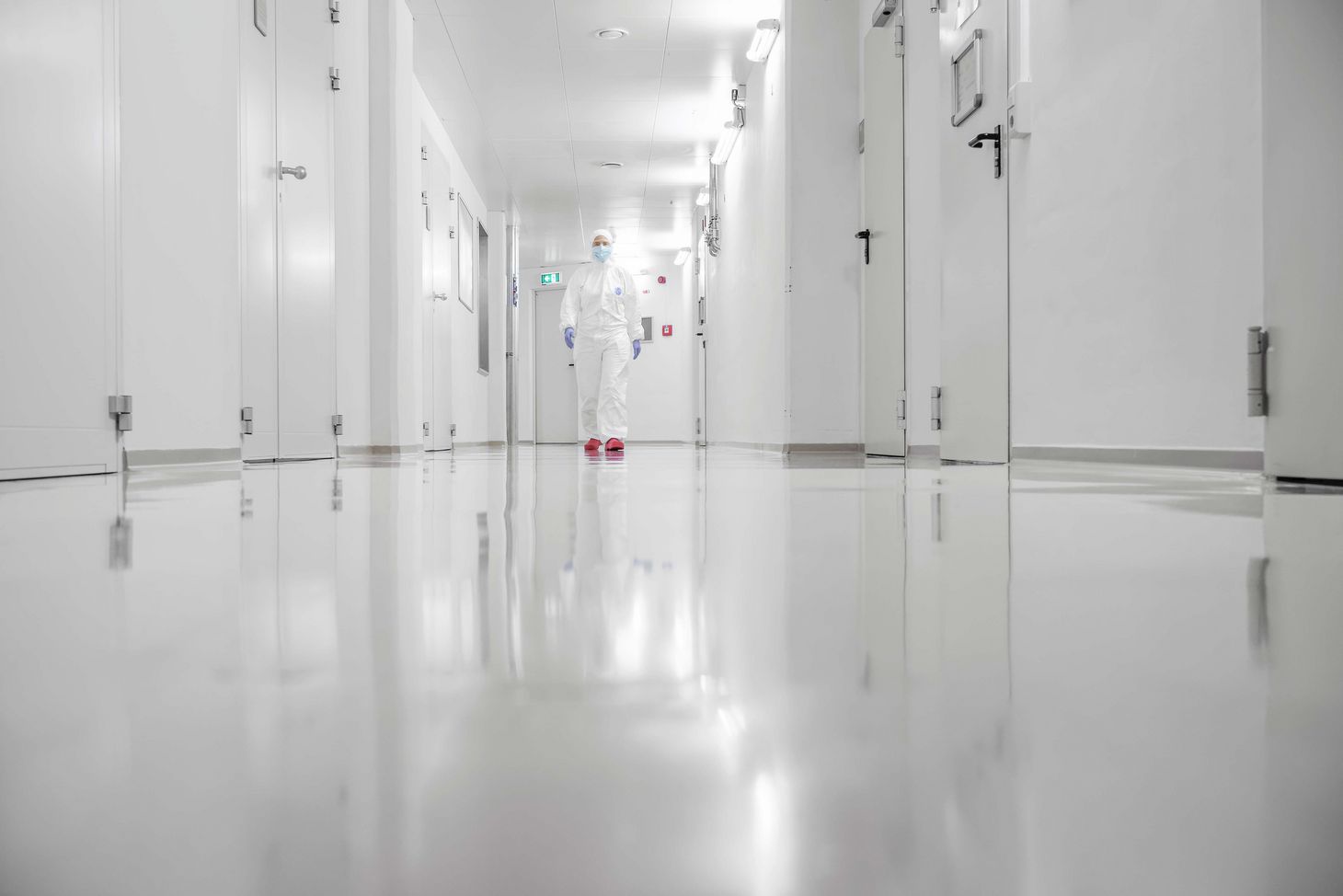
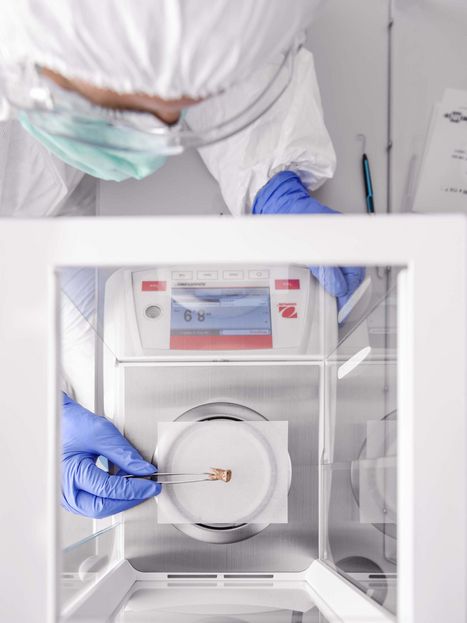
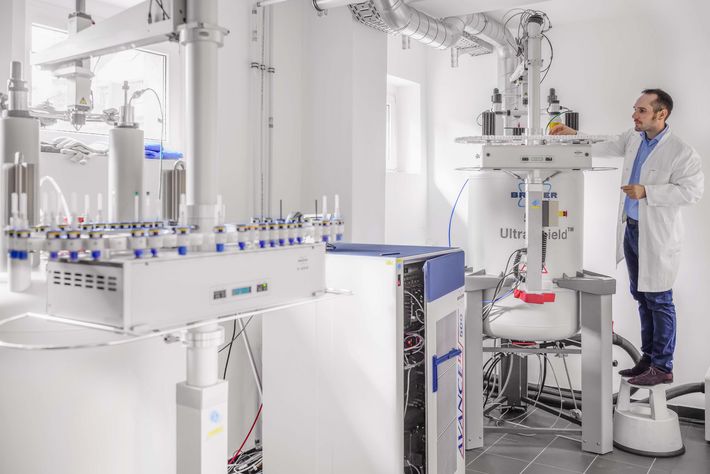
The secrets harboured in dental plaque
The research methods of Warinner and Stallforth may call to mind the film Jurassic Park, where geneticists use DNA samples to awaken dinosaurs to new life. But Christina Warinner has little patience with the narrative: “Dinosaurs became extinct about 70 million years ago. It’s highly unlikely that traces of their DNA can still be found.” Pierre Stallforth agrees: “And if any traces are found, it wouldn’t be possible to recreate incredibly complex life forms like dinosaurs.” In comparison, their own plan is quite modest, yet all the more realistic for that. Warinner and Stallforth will travel “only” 100 000 years into the past, to the Palaeolithic era, where their focus is on tiny molecules of natural products. And rather than taking a time machine, all they need for their journey is dental plaque—which has proven to be a veritable gold mine for archaeologists. In her research, Warinner has demonstrated that no other substance harbours more or better-preserved DNA than dental plaque, and she has earned international renown in the field of archaeogenetics for her analyses of ancient DNA. Over time, Warinner has collected hundreds of dental plaque samples from all over the world and from various epochs to use in her work. Dental plaque functions as a type of time capsule that holds a petrified record of everything a human being had in his or her mouth: scraps of food, but also thousands of bacterial species. It is also very auspicious for research that Neanderthals and other early hominids had rather poor dental hygiene. Had they used toothbrushes, this abundant oral microbiome—the entire community of microorganisms in the mouth—would have been destroyed.
Novel challenge
Pierre Stallforth’s part in the project is replicating ancient natural products having antibiotic properties. The biotechnologist and chemist is specialised in the analysis and synthesis of natural products; through his past research, he has already discovered promising candidates. His work is made possible thanks to new technologies like Next Generation Sequencing (NGS) for fast and precise DNA analysis in addition to new methods of genetic sequencing. Nevertheless, recreating DNA from the past represents an entirely novel challenge for even the most forward-looking biotechnologists, and Pierre Stallforth and his team must first further develop existing technologies. Prehistoric DNA is preserved in fragments, so the researchers need to recognise and identify the traces of DNA, put them together correctly and then close gaps in the genetic sequence using bioinformatics methods. Such complex projects rely on interdisciplinary expertise, which Stallforth has found at the Friedrich Schiller University Jena, where experts from the fields of archaeology, molecular biology, chemistry and biotechnology work together closely at the “Balance of the Microverse” Cluster of Excellence that explores microbial communities.
Learning from evolution
For Christina Warinner, all this is a dream come true: “Thanks to new technologies, we can see further and further into the past, and a whole new world is emerging.” It is likely that Warinner, Stallforth and their research groups will also discover other natural products having a potentially wide range of applications: as alternative energy sources, pigments or industrial materials. The main goal, however, is increasing the diversity of antibiotics. At the same time, Project Palaeobiotechnology will also help to shed light on the history of humankind. This includes fundamental questions regarding the evolutionary development of bacteria, their antibiotic natural products and their antibiotic resistance. But this much is clear: resistance predates the production of antibiotics in the lab. Already tens of thousands of years ago, bacteria found ways to defend themselves against the antimicrobial products of their enemies and competitors. Warinner and Stallforth have no illusions: bacteria will always develop resistance to new antibiotics. “But once we understand how bacteria evolve to become resistant, we may have indications as to how antibiotics should be structured to prevent a resistance for as long as possible,” Stallforth says. To better grasp the evolution of bacteria, natural products and resistance, the researchers plan to compare the ancient microbiome with that of the present day, in particular the microbiome gathered from traditional communities in Mongolia or Cameroon, where no processed food is eaten and where pharmaceutical antibiotics are uncommon.
Postponing resistance
Pierre Stallforth stresses that preventing resistance is mainly a political and public health issue. New antibiotics should be used only with great restraint, for instance as a drug of last resort or in combination with other medicines or therapies. Moreover, preventing antibiotic waste produced by the pharmaceutical industry from contaminating soils and water—a common problem in developing countries—is essential. “If we act with greater caution, we can postpone resistance for decades,” Stallforth says. The search for new antibiotic agents must nevertheless continue to move forward, and one aim of Project Palaeobiotechnology is to develop a procedure that will allow researchers to efficiently mine for large samples of natural products and test their antibiotic properties. The Werner Siemens Foundation is supporting this work with a 10-year grant; in order to have interesting agents for pharmaceutical companies by 2029, the researchers will already begin preclinical trials of promising natural products to discover whether the products are effective—and safe—in cell cultures and in animals.
World première
The project is the first of its kind: never before have researchers sought new antibiotics in ancient fossils or attempted to replicate the natural products of extinct bacteria. As such, Christina Warinner and Pierre Stallforth are operating in a unique niche, one that promises to reveal a wide range of potential antibiotic agents. With the grant from the Werner Siemens Foundation, Warinner and Stallforth are joining forces to found and permanently establish the new discipline of palaeobiotechnology. One step towards achieving this goal is setting up a new interdisciplinary graduate school, where future archaeologists learn about biotechnological methods, and future biotechnologists acquire archaeological know-how. And embark on a journey back to the past—and into the future.
Text: Adrian Ritter
Photos: Felix Wey




